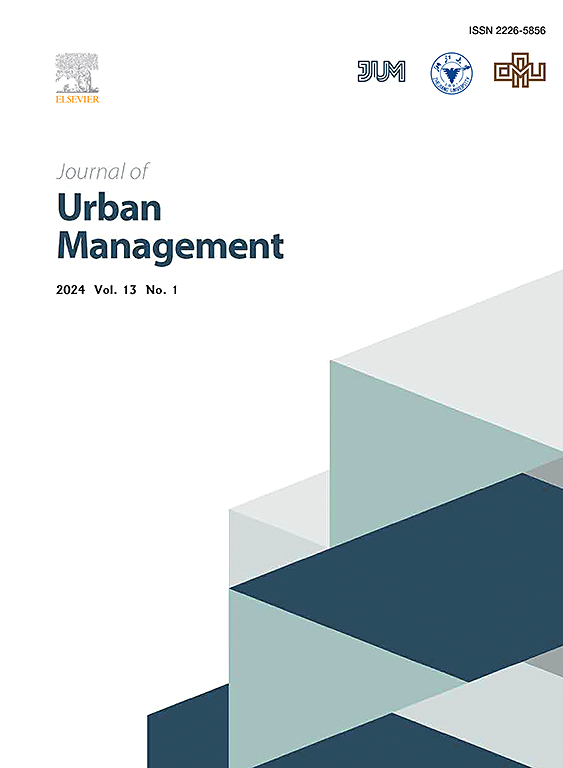Does morphological polycentric spatial structure improve subjective well-being? Evidence from China based on the moderating perspective of the urban-rural income inequality
IF 5
2区 社会学
Q1 URBAN STUDIES
引用次数: 0
Abstract
This paper reveals the mechanisms by which the spatial structure of morphological polycentricity (MP) affects the subjective well-being (SWB) in China, focusing on the distribution of economic activities. Using panel data for 21 provinces in China from 2010 to 2020, we compare the effects of dynamic MP, measured using nighttime light data, and static MP, measured using demographic data, on SWB. Our findings reveal that, as regional economic benefits enhance and megacities form, the adjustment of MP spatial policy becomes increasingly significant in improving SWB. Notably, dynamic changes in MP exhibit a more pronounced effect on the satisfaction and confidence aspects of SWB. Moreover, increased urban-rural income inequality moderates this relationship, diminishing the positive impact of MP on SWB among rural households. Regional analysis indicates that in economically advancing areas and emerging megacities, adjustments in MP spatial policy are increasingly crucial for improving SWB. Central regions experiencing economic growth exhibit a greater need to balance economic agglomeration with population dispersion to optimize well-being outcomes. The empirical evidence provided suggests the potential benefits of adopting harmonized development strategies and indicates that incorporating the socio-economic context into spatial planning may contribute to the optimization of well-being.
形态多中心空间结构是否能提高主观幸福感?基于调节视角的中国城乡收入不平等证据
本文以经济活动的分布为重点,揭示了形态多中心性空间结构对中国主观幸福感的影响机制。利用2010年至2020年中国21个省份的面板数据,我们比较了动态MP(使用夜间灯光数据测量)和静态MP(使用人口统计数据测量)对SWB的影响。研究结果表明,随着区域经济效益的提升和特大城市的形成,城市空间政策的调整对城市幸福感的改善作用日益显著。值得注意的是,MP的动态变化对主观幸福感的满意度和信心方面的影响更为显著。此外,城乡收入不平等的加剧缓和了这一关系,削弱了MP对农户主观幸福感的积极影响。区域分析表明,在经济发达地区和新兴特大城市,MP空间政策的调整对改善SWB越来越重要。经历经济增长的中部地区更需要平衡经济集聚与人口分散,以优化福祉结果。所提供的经验证据表明,采用协调发展战略的潜在好处,并表明将社会经济背景纳入空间规划可能有助于优化福祉。
本文章由计算机程序翻译,如有差异,请以英文原文为准。
求助全文
约1分钟内获得全文
求助全文
来源期刊

Journal of Urban Management
URBAN STUDIES-
CiteScore
9.50
自引率
4.90%
发文量
45
审稿时长
65 days
期刊介绍:
Journal of Urban Management (JUM) is the Official Journal of Zhejiang University and the Chinese Association of Urban Management, an international, peer-reviewed open access journal covering planning, administering, regulating, and governing urban complexity.
JUM has its two-fold aims set to integrate the studies across fields in urban planning and management, as well as to provide a more holistic perspective on problem solving.
1) Explore innovative management skills for taming thorny problems that arise with global urbanization
2) Provide a platform to deal with urban affairs whose solutions must be looked at from an interdisciplinary perspective.
 求助内容:
求助内容: 应助结果提醒方式:
应助结果提醒方式:


